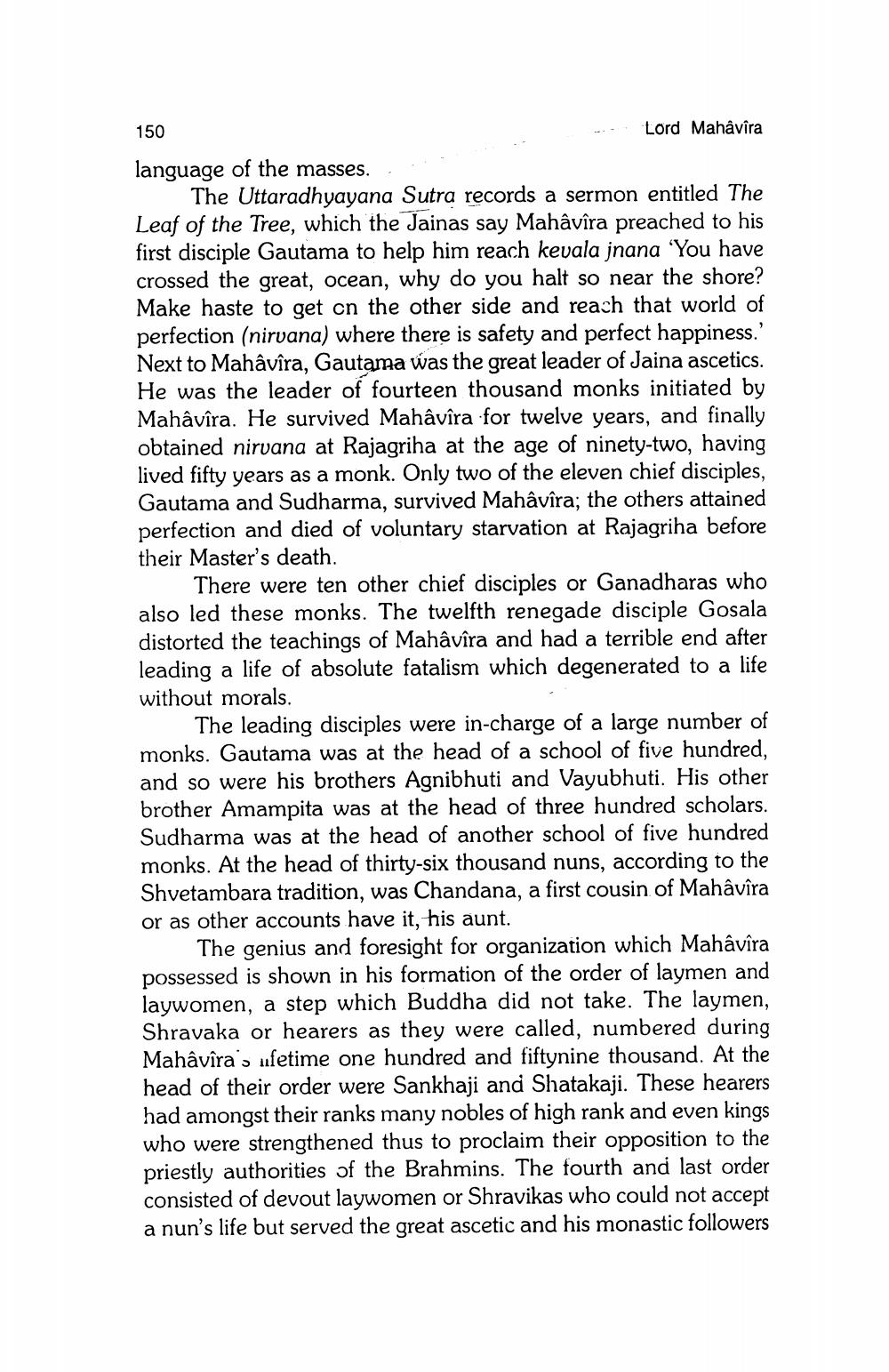________________
150
Lord Mahâvîra
language of the masses.
The Uttaradhyayana Sutra records a sermon entitled The Leaf of the Tree, which the Jainas say Mahâvîra preached to his first disciple Gautama to help him reach kevala jnana 'You have crossed the great, ocean, why do you halt so near the shore? Make haste to get on the other side and reach that world of perfection (nirvana) where there is safety and perfect happiness.' Next to Mahâvîra, Gautama was the great leader of Jaina ascetics. He was the leader of fourteen thousand monks initiated by Mahâvîra. He survived Mahâvîra for twelve years, and finally obtained nirvana at Rajagriha at the age of ninety-two, having lived fifty years as a monk. Only two of the eleven chief disciples, Gautama and Sudharma, survived Mahâvîra; the others attained perfection and died of voluntary starvation at Rajagriha before their Master's death.
There were ten other chief disciples or Ganadharas who also led these monks. The twelfth renegade disciple Gosala distorted the teachings of Mahâvîra and had a terrible end after leading a life of absolute fatalism which degenerated to a life without morals.
The leading disciples were in-charge of a large number of monks. Gautama was at the head of a school of five hundred, and so were his brothers Agnibhuti and Vayubhuti. His other brother Amampita was at the head of three hundred scholars. Sudharma was at the head of another school of five hundred monks. At the head of thirty-six thousand nuns, according to the Shvetambara tradition, was Chandana, a first cousin of Mahâvîra or as other accounts have it, his aunt.
The genius and foresight for organization which Mahâvîra possessed is shown in his formation of the order of laymen and laywomen, a step which Buddha did not take. The laymen, Shravaka or hearers as they were called, numbered during Mahâvîra's ufetime one hundred and fiftynine thousand. At the head of their order were Sankhaji and Shatakaji. These hearers had amongst their ranks many nobles of high rank and even kings who were strengthened thus to proclaim their opposition to the priestly authorities of the Brahmins. The fourth and last order consisted of devout laywomen or Shravikas who could not accept a nun's life but served the great ascetic and his monastic followers




